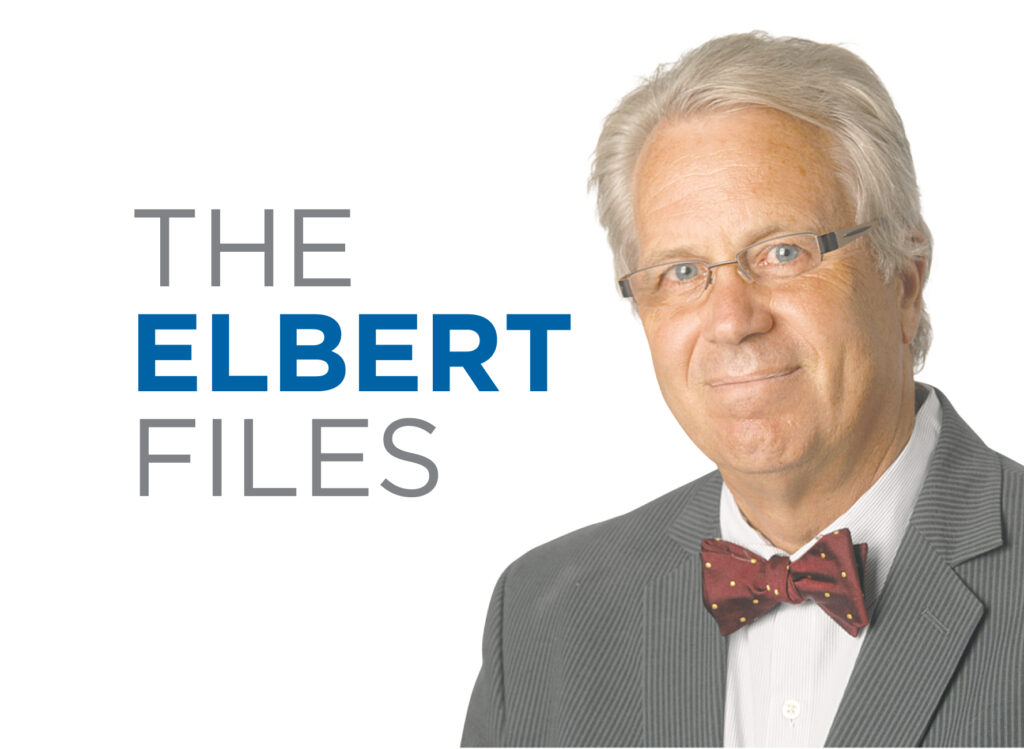The Elbert Files: More about Morrison

When historians look back on the 2020s, one thing they are sure to note is the transportation revolution.
Those of us at ground level are largely oblivious, but ultimately today’s shifting from gasoline to electric power could prove as significant as what happened a century ago when Henry Ford’s Model T began rolling off the assembly line.
The Model T was the first mass-produced vehicle with interchangeable parts, which made it affordable to the middle class and vastly expanded the market for cars and travel. (Ford’s willingness to pay a living wage, which allowed his workers to buy the vehicles they made, was also a factor.)
But the internal combustion engine was the death knell for battery-powered carriages, including an 1890 model created by Des Moines inventor William Morrison.
Earlier this year, I wrote about Morrison’s electric carriage, which is said to be the first self-powered electric vehicle in the world to carry passengers.
After that column appeared, I learned more about Morrison and his inventions, which centered on improving the storage capacity of batteries.
As I read more about Morrison, it occurred to me that his focus was on mass transportation, not the consumer market that Ford identified, captured and exploited so well.
Iowa author William H. Thompson set the scene in a chapter of his 1989 book, “Transportation in Iowa,” where he traces the history of Iowa’s street railways and electric interurbans.
The year (1888) that Morrison’s first electric carriage appeared on Des Moines streets was also the year electricity replaced horses as the preferred power source for inner-city transportation in Iowa’s capital city.
Electricity offered several advantages, Thompson noted. It was faster; electric trolleys could travel at up to 15 mph, more than twice as fast as horse-drawn trolleys. It was less expensive; electric motors did not consume huge quantities of feed, as did horses and mules. And it was cleaner, because electricity did not produce 10 pounds of excrement per day, as did each of the scores of animals used to pull commuter trolleys
.
The motors that powered Morrison’s carriages also drove the city’s electric trolleys.
The future he envisioned must have been one in which fleets of electric trolleys powered by his batteries would become the primary mode of inner-city travel throughout urban America.
His vision was shared by others, including a group of Chicago businessmen, who created the American Battery Co. in 1889.
Their interest was a godsend for Morrison, who was inundated with requests for information after articles about his achievement appeared in Scientific American, Western Electrician and other periodicals.
“No less than 16,000 letters” from all over the country and Europe flooded into the city addressed to Morrison, the Des Moines Register reported in a 1907 article.
Most sought information the inventor did not want to share. In fact, he resorted to tearing off the return mail stamps as a way of collecting value from his invention. His mail yielded two bushel baskets of postage stamps, according to the newspaper.
The Chicago men reached an agreement that allowed them to use Morrison’s battery patents. They also introduced a wider audience to his electric carriage by bringing one to the 1893 Chicago World’s Fair, and using it to transport fairgoers to various exhibits.
Morrison had created similar excitement in Des Moines five years earlier when he debuted his electric carriage at the city’s Seni Om Sed (Des Moines spelled backward) parade.
His new type of storage battery was a marvel. Twenty-four batteries that were shaped roughly like a modern Tesla battery, weighing 32 pounds each, sat under the carriage seats. They could be charged overnight without being removed and provide power for up to 50 miles of travel at 20 mph, according to Morrison.
Unfortunately, the evolution of his storage battery was interrupted by the successes of Henry Ford and other early automakers.
Now, however, the process has come full circle with Ford’s recent introduction of an electric Mustang and an electric version of its popular F-150 pickup truck.






